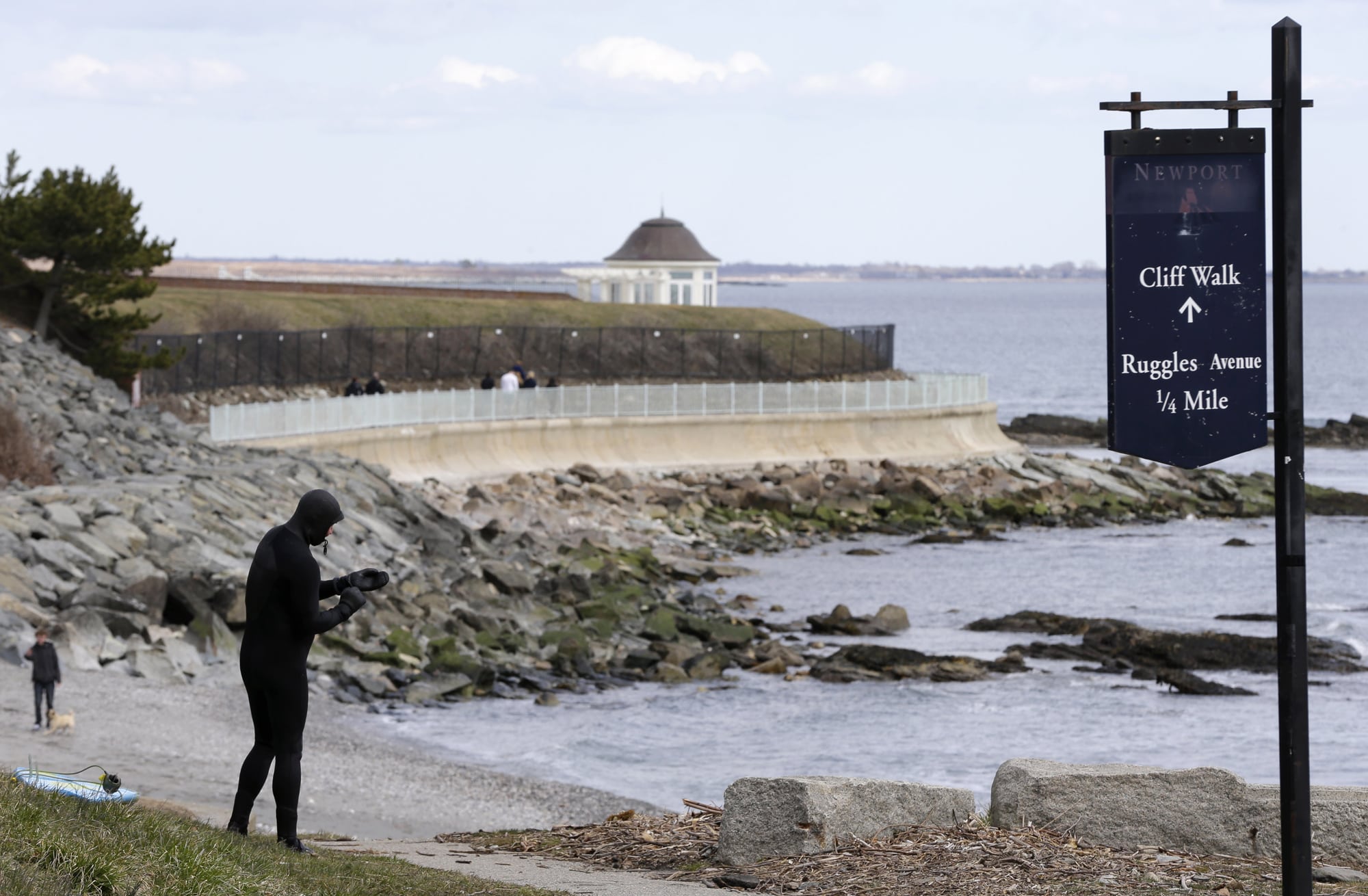Skift Take
New Jersey’s press push boasting the shore’s rebound after Sandy washed out many discussions about the parts of the Northeast that haven't been able to bounce back so quickly.
Newport’s Cliff Walk, which runs between the Atlantic Ocean and some of the city’s most stunning Gilded Age mansions, sustained what has been estimated at up to $8 million in damage during Superstorm Sandy. Some walkways were washed away or caved in. In other areas, huge boulders were moved by the violent surf.
Seven months after the storm, about two-thirds of the 3.5-mile trail remains closed and will be off limits during the height of the tourist season while the state works to repair the walk, which is free and attracts hundreds of thousands of people per year. While locals agree something must be done to fix it, there is a debate over how.
An early plan to shore up some areas with huge 4-ton boulders was scrapped after complaints it could irreversibly damage one of New England’s best surfing spots, just below the city’s grandest mansion, The Breakers, built by Cornelius Vanderbilt II. Environmentalists are still concerned that some of the work might be too drastic and could overdevelop a centuries-old path that’s rough and rugged in some parts, more similar to a national park trail than a walk through a city dating back to Colonial times.
“There needs to be a voice for maintaining it as scenic and as natural as we can. That’s one of the things that people treasure about the walk,” said Drew Carey, a member of Clean Ocean Access, an environmental group.
Local lore holds that the Cliff Walk was created by Narragansett Indians before the first Europeans arrived. Bert Lippincott, a reference librarian at the Newport Historical Society, said no one knows for sure, but it is certainly hundreds of years old and developed from a coastal trail used by local inhabitants for access to the water. Before the Gilded Age and the building of the city’s famous mansions in the mid-19th century, the area around the walk was fields and grazing pastures, he said.
As the area was developed as a summer resort for the wealthy during that time, one property owner, William Beach Lawrence, tried to block off the portion of the Cliff Walk that ran over his property on Ochre Point, around the area where The Breakers is now. The case went to the Rhode Island Supreme Court, which ruled property owners must allow people access to the Cliff Walk, Lippincott said.
Over the years, the trail has been developed in some places and stayed natural in others. The most heavily traveled portion, a mile-long section that ends near The Breakers, is paved like a sidewalk and smooth enough to push a baby stroller. Some sections have been developed piecemeal by property owners or the state, while others are rocky, seemingly untouched. Some places require walkers to scramble up or down slippery rocks to pass.
That’s just the way some visitors like it.
Jennifer and Sandy Smokler of Westport, Conn., were walking the more developed portion of the trail during a recent weekend in Newport to celebrate their seventh wedding anniversary. They said it was nice to have a combination of walks from easy to more challenging.
“Just looking around at the scenery, it should be rugged. It’s a rugged scenery,” Sandy Smokler said.
The five-member Cliff Walk Commission provides policy advice to the City Council on the Cliff Walk. Commission member Dave McLaughlin, also a member of Clean Ocean Access, says he and Clean Ocean Access support the state’s scaled-back repair plans, but they still have reservations. They’ve suggested the state forego the use of concrete on some of the rougher walkways and skip installing large boulders in some areas. The state is planning to submit final plans for approval to environmental officials next week. Construction could begin as early as late summer, the state says.
McLaughlin says he’s sensitive to questions of liability. The city has been sued by people who were hurt on the Cliff Walk. But on a recent walk on the now-closed section of the trail, he also wonders aloud what will happen to the cliff and the surrounding areas if more structured paths are built.
“The moment you introduce some manmade structure, the natural things that fortify the coastline start to become compromised,” he said.
He believes the while some of the damage happened because of Sandy, the biggest issue is a lack of a long-term maintenance strategy. There’s no money set aside by the state to make basic repairs, and some of the damage, such as sidewalks that were washed out, wouldn’t have happened if it were being maintained.
No matter what, he says, he knows the walk will continue to evolve, whether by Mother Nature or by man.
“It all depends on what kind of experience you want. There’s one point of view that says, ‘Just don’t do anything at all, just let the coastline be natural. It will ebb and flow with how nature wants it to,'” McLaughlin said. “This is all going to change eventually. It can’t stay like this forever.”
Copyright (2013) Associated Press. All rights reserved. This material may not be published, broadcast, rewritten, or redistributed.
![]()
The Daily Newsletter
Our daily coverage of the global travel industry. Written by editors and analysts from across Skift’s brands.
Have a confidential tip for Skift? Get in touch
Tags: nature, rhode island, sandy, summer, tourism
Photo credit: In this Wednesday, March 27, 2013 file photo Dave Livingston, left, removes his gloves while standing near a portion of the Cliff Walk, in Newport, R.I. Large portions of the Cliff Walk damaged by Superstorm Sandy has yet to be repaired as the summer tourist season approaches. Steven Senne / AP Photo
